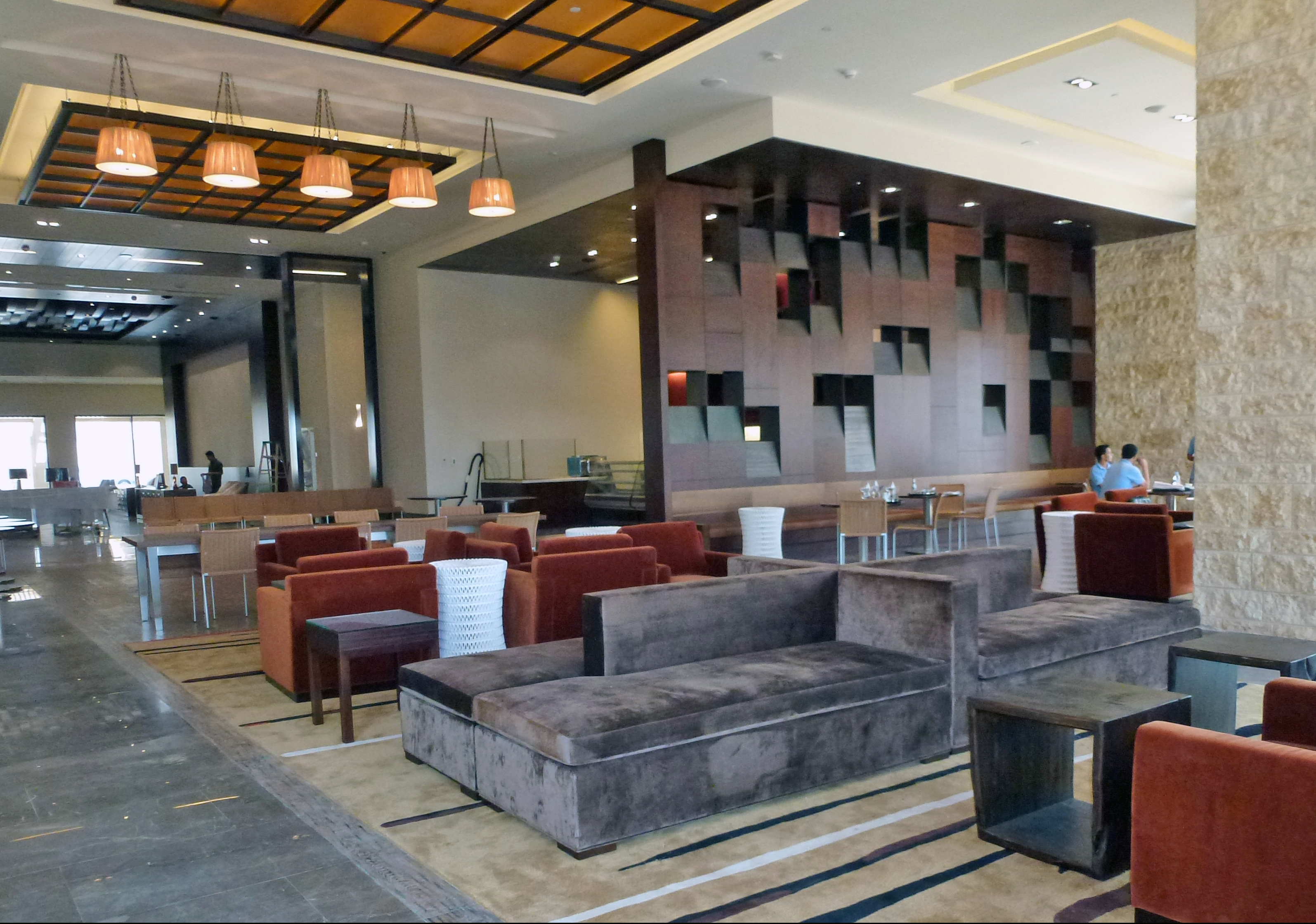GREC Architects announced the November 1st 2011 opening of the Westin Abu Dhabi Golf Resort and Spa in Abu Dhabi, the capital of the United Arab Emirates. The luxury golf resort, owned by TDIC, (Tourism Development Investment Company), and operated by Starwood Hotels and Resorts, is an oasis for wellness and rejuvenation and is ideally situated next to the renowned Abu Dhabi Golf Course, home to the PGA European Tour Abu Dhabi Golf Championship.
The hotel was designed by GREC and an international team of consultants to enhance the offerings of the Abu Dhabi Golf Club without imposing upon the dramatic landscapes of the elite golf course. Chiseled stone exteriors and minimalist, contemporary interiors forged from rusticated gold limestone, petrified and reclaimed wood and warm hued accents give a simple yet rich feeling that integrates the club into the desert surroundings. To contend with the extreme desert climate, outdoor spaces are veiled in crafted architectural screens, accompanied by modern fountains, swimming pools, and a lush, vegetated leisure area. Hotel common areas have soaring ceilings that lead the eye up to the uniquely designed, winged rooftops that are the signature of the resort.
Greg Randall, the managing partner for the project explained “we wanted the hotel to serve as a sophisticated backdrop for the breathtaking landscape. The European PGA Championship Tournament is played here every year, so it was important that the design represents Abu Dhabi’s forward thinking as a modern city and its expanding presence on the world stage.” BD+C
Related Stories
| Dec 28, 2014
The future of airport terminal design: destination status, five-star amenities, stress-free travel
Taking a cue from the hospitality industry, airport executives are seeking to make their facilities feel more like destinations, writes HOK's Richard Gammon.
| Dec 28, 2014
10 key design interventions for a healthier, happier, and more productive workplace
Numerous studies and mountains of evidence confirm what common sense has long suggested: healthy, happier workers are more productive, more likely to collaborate with colleagues, and more likely to innovate in ways that benefit the bottom line, writes Gensler's Kirsten Ritchie.
| Dec 28, 2014
7 fresh retail design strategies
Generic ‘boxes’ and indifferent service won’t cut it with today’s savvy shoppers. Retailers are seeking a technology-rich-but-handmade vibe, plus greater speed to market and adaptability.
| Dec 28, 2014
Workplace design trends: Make way for the Millennials
Driven by changing work styles, mobile technology, and the growing presence of Millennials, today’s workplaces are changing, mostly for the better. We examine the top office design trends.
| Dec 28, 2014
AIA: Commercial glass façade and door systems
When it comes to selecting fenestration systems—particularly glass facades and door systems—a number of factors come into play, requiring a thorough evaluation of a project’s individual requirements.
| Dec 28, 2014
10 essential habits of successful architects
Want to take the next step as a design processional? John Gresko, Senior Project Architect with HDR, explores the traits that many great architects possess.
| Dec 28, 2014
10 unglamorous things architects do
An acquaintance recently asked me about the kinds of things I did on a day-to-day basis at work, anticipating a response loaded with enviable activities. She was wrong, writes HDR's John Gresko.
| Dec 28, 2014
New trends in ceiling designs and materials [AIA course]
A broad array of new and improved ceiling products offers designers everything from superior acoustics and closed-loop, recycled content to eased integration with lighting systems, HVAC diffusers, fire sprinkler heads, and other overhead problems. This course describes how Building Teams are exploring ways to go beyond the treatment of ceilings as white, monolithic planes.
| Dec 27, 2014
7 ways to enhance workplace mobility
The open work environment has allowed owners to house more employees in smaller spaces, minimizing the required real estate and capital costs. But, what about all of their wireless devices?
| Dec 27, 2014
'Core-first' construction technique cuts costs, saves time on NYC high-rise project
When Plaza Construction first introduced the concept of "core first" in managing the construction of a major office building, the procedure of pouring concrete prior to erecting a steel frame had never been done in New York City.

















